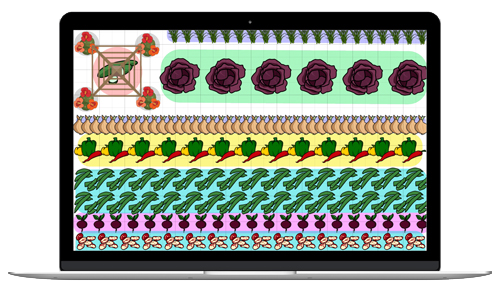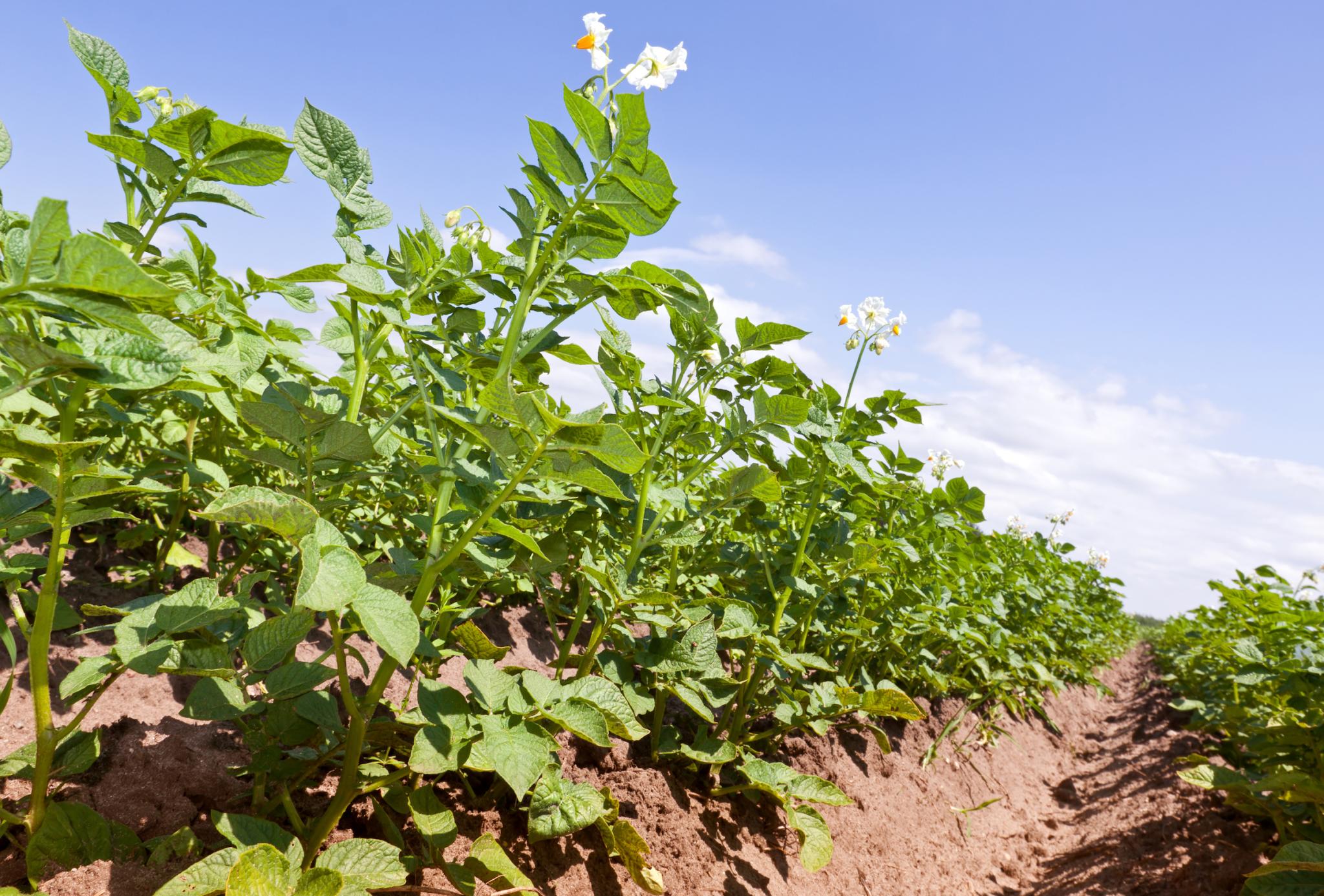
Planting, Growing, Harvesting, and Storing Potato Plants
The Almanac Garden Planner - Use It Free for 7 Days!
Plan your 2025 garden with our award-winning Garden Planner.
There are three classifications for potatoes based on when you harvest (vs. when you plant). If you harvest for storage, be sure to choose the right type:
- Early-season potatoes: first to be planted in early spring. Grow quickly (60 to 80 days), ready to harvest by early summer, tender flesh, thinner skin, store up to a few weeks.
- Mid-season potatoes (aka second early potatoes or “earlies”): mature in 80 to 100 days, typically lifted up from second half of summer, store up to a month.
- Late crops: mature in 100 to 130 days, best for storing, lasting 2 to 3 months in the right conditions; planted in August and harvested in fall.
Also, decide on the texture and flavor of your potatoes, and how you’d like to eat them:
- Dry-fleshed, mealy potatoes like russets and long white potatoes are used for baking, frying, and mashing. As mashed potatoes, they will not be gluey, and they will absorb gravy, butter or sour cream.
- Moist, waxy, round potatoes are great in soups, curries, frittatas, and salads because they don’t fall apart when cooked. You can pan-fry leftover boiled potatoes. When you mash waxy potatoes, they can become sticky.
- Red-skinned potatoes are often used for boiling or for potato salads.
Some popular potato varieties, such as ‘Yukon Gold’, fall somewhere in between truly waxy and mealy.
There are over 100 potato plant varieties! Go beyond the Idaho potato to explore more exotic and delicious options. See our article on choosing the best potato varieties!
Early Varieties:
- ‘Irish Cobbler’: tan skin, irregular shape (great heirloom potato for delicious mashed potatoes!)
- ‘Red Norland’: deep red skin, sweet, delicate flavor, great in potato salads or boiled
- ‘Mountain Rose’: red skin and pink flesh, resistant to some viruses
Mid-Season Varieties
- ‘Yukon Gold’: popular, tan skin and buttery-yellow flesh, mid to large size
- ‘Red Pontiac’: red skin, deep eyes (easiest and most adaptable red potato there is to grow)
- ‘Viking’: red skin, very productive
- ‘Chieftan’: red skin, resistant to potato scab, stores well
Late Varieties
- ‘Katahdin’: tan skin, resistant to some viruses
- ‘Kennebec’: tan skin, resistant to some viruses and late blight
- ‘Elba’: tan skin, large round tubers, resistant to blight and potato scab
- All Blue Potatoes
- ‘Fingerling Salad’ potatoes
Cooking Notes
Potatoes can be prepared in many ways: boiled, mashed, cut into pieces and roasted, french-fried, scalloped, made into dumplings or pancakes, grated into hash browns, and even brewed as alcoholic beverages.
Most potato dishes are served hot, but some are first cooked, then served cold, notably potato salad and potato chips.
ADVERTISEMENT
Hi, Debbie, There is no such thing as a potato seed; the phrase “seed potato” is used on tubers that are used to start plants that are/will be genetically identical to the parent, or source plant. Your organic “seed potatoes” should be fine for growing plants this season.
How do you get your potatoes to be bigger? My husband planted some, last year, but they were very small in size. What do you do to get them to grow into bigger potatoes?
I a progressive potato farmer in the Central Anatolian region. However, my best seed potato varieties get contaminated after a couple of years of plantations in the field. what would you suggest to me keep my seed potato clean from diseases?
There is a lot of information available. It seems that using disease-free seed potatoes is important, but so is crop rotation. This page, for commercial growers, identifies many diseases (it may be more info than you want) but long crop rotations are frequently recommended. See https://cpb-us-e1.wpmucdn.com/blogs.cornell.edu/dist/5/6962/files/2018/04/UNECE-Guide-to-Seed-Potato-Diseases-Pests-and-Defects-260tm8k.pdf
This one also advises crop rotation https://www2.ipm.ucanr.edu/agriculture/potato/Crop-Rotation/
These also suggest what crops to grow instead.
We hope this helps!
Hi All,
I planted potato buds that came from potatoes I bought in our local market.
Instead of growing vertically, they are spreading out like sweet potatoes. I have been searching the internet as to what kind of potatoes I have but no luck.
Can you help me out please?
Thank you!
DId you ask at the market what type of potatoes these are?
Your soil might contain too much nitrogen.
Well, I planted red potatoes in spring. Something, guessing either rat or frog, dug in and my hills died back. So went ahead and harvested any potatoes that I found underground (June). In August I noticed potatoes growing in the same area. I must have missed some. I have been hilling them since I found them. We just had 2 hard frosts and today I'm digging them up. More to follow.
What temp range are we talking about that constitutes living in a region that has "mild winters?" I have looked Google over and I can not find a straight answer. Someone must know though because the term is thrown around all over the gardening world. Can someone please answer this?
We consider somewhere with a “mild winter” to be an area that experiences only a few (if any) frosts or snowfall during the year. Temperatures may dip into the high 20s or low 30s (Fahrenheit) occasionally, but generally temperatures should stay above freezing.
I didn't read anything about fertilizing potatoes on this article.... I've heard that if you fertilize at the wrong time, your plants will be large, and will flower, but there will be no tubers. So what is the right time to fertilize? I use Monty's Root and Bloom - NPK of 2-15-15. It's a liquid, foliar spray that I use every 1 -2 weeks. I am also growing my potatoes in crates, so they tend to dry out quicker than they would in a garden. Answers appreciated!














